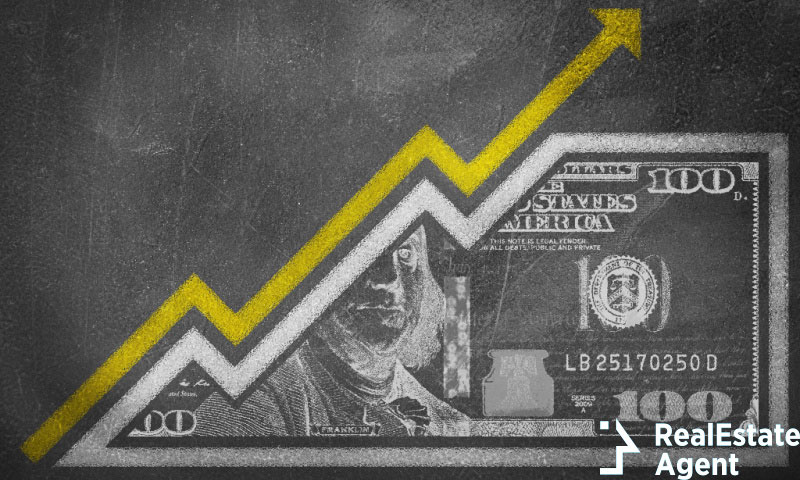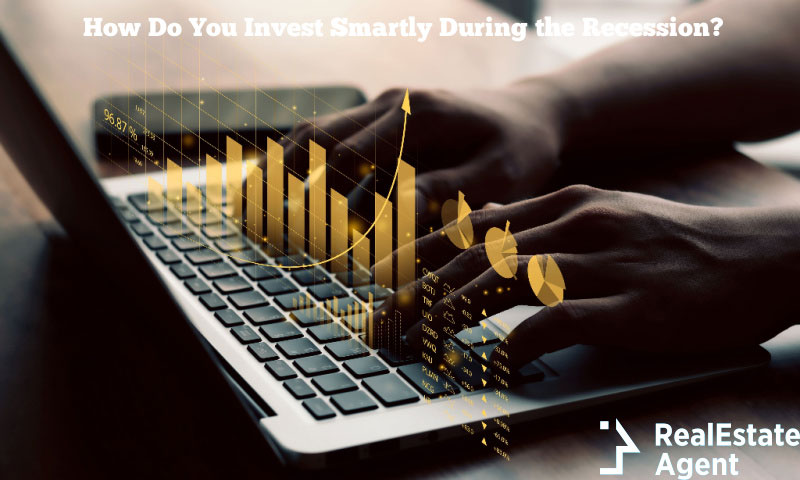How will new development affect home value? More precisely, do shopping centers increase property value? Homeowners often fear that new development will diminish their property value. According to popular (mis)belief, large-chain retailers can bring property value down once built near a residential area. We’ve debunked that myth and found that across the country, new developments in a community increase home values within it. Although this is a fact, you might wonder if there is more to the story.
- Will You Vote for Progress or Prefer Peace of Mind?
- What Does Retail Development Entail Precisely?
- Discover the Perks of Retail Development!
- Learn about the Pitfalls of Retail Development!
- Discover how Your Life Changes in a Developing Neighborhood!
- How Can Various Retail Developments Affect Your Property Value?
- Examples of How Retail Development Can Turn a Quaint Town Upside-down
Will You Vote for Progress or Prefer Peace of Mind?
Undeniably, commercial and retail development is a sensitive topic that spurs heated discussions. Many locals prefer a quaint, family-friendly environment to noisy construction sites and the ensuing population growth. Would you exchange your peace of mind for an increased home value? By all means, the answer depends on each homeowner who’s about to experience retail development in a tranquil, charming town. Why don’t you join us as we reveal the ups and downs of retail development?
Suppose you’re a concerned homeowner who has just learned about a new mall opening in your neighborhood. You want to discover how this can affect your home’s market value. Can urban development have further ramifications, such as potential title change? Or you might be a home buyer browsing the market based on specific housing requirements. You can discuss things with a professional by finding real estate agents near you.
What Does Retail Development Entail Precisely?
Retail development involves introducing or expanding stores, malls, shopping centers, and other commercial establishments in a given area. Market analysts see it as a growth indicator that attracts investments and supposedly facilitates the local economy and infrastructure. Locals often regard it as an unnecessary nuisance. How about house hunters?
Clashing Perspectives and Priorities
A home’s proximity to a retail store can be one of those perks that sell a house. Suppose a home is closer to a shopping center. In that case, homebuyers may find this more attractive because the house’s location would allow them less of a commute to shopping. From this perspective, retail development tends to raise property value by a certain percentage.
Retail stores can even revitalize an old neighborhood with already dwindling property value. This is because new retail stores can create jobs for community residents. This will, subsequently, bring more money into the community because area residents are supplied with more jobs. For instance, folks in Boynton Beach, FL, will all tell you that jobs and developments are just as important as proximity to the sea and natural beauty to the property price.
On the other hand, substantial commercial and retail developments can bring traffic to a previously quiet or rural area. This hassle may cause residents to move away because of the new bustling community and their preference for a more relaxed environment. Retail development may also cause potential home buyers to reevaluate their neighborhood choices. However, this usually doesn’t substantially hinder property value, as prospective homeowners will frequently be attracted to the new community retail shops.
Discover the Perks of Retail Development!
From any perspective, retail development brings countless advantages. A new mall or shopping center pumps new blood into the veins of a local community, resulting in new opportunities for economic progress and expanding one’s social activities. Let’s examine the three main factors contributing to revitalized neighborhood property values. Everybody wins (?)
Facilitating Economic Growth
One of the most significant benefits is the boost to the local economy. New stores mean more jobs, leading to increased employment and improved living standards for residents. How does it enhance the economy?
With every new store that opens, there are numerous positions to be filled, from managerial roles to sales assistants. This influx of opportunities empowers the local community with employment, fostering a vibrant economy.
Boosting Increased Convenience
Retail development offers a range of shopping options, reducing residents’ need to travel to neighboring towns for goods and services. Why is convenience critical?
Convenience enhances the quality of life. Imagine getting all your essentials, fashion needs, or gourmet food without leaving your town. This not only saves time but also contributes to reducing travel emissions. Sustainable traveling can be accomplished!
Promoting Tourism
Attractively designed retail spaces can become destinations in their own right, drawing visitors from surrounding areas and national or even international regions. Can retail indeed attract tourists?
Absolutely! Think about iconic bookstores or unique farmers’ markets that become must-visit spots for travelers. They not only promote tourism but also help in flaunting the town’s unique culture and heritage.
Learn about the Pitfalls of Retail Development!
More conservative locals will argue that no financial gain or increased property prices are worth the hassle commercial and retail development creates. Let’s listen to their reasoning!
Loss of Character
One of the most heartfelt concerns is the potential loss of the town’s charm and identity. The unique vibe of local mom-and-pop shops might get overshadowed by large chains. However, does character truly matter?
We can’t stress this one enough! A town’s character is its soul. It’s about those retro cafes, antique stores, and family-run businesses with stories attached to them. These make a town home for its residents and attractive to many visitors.
Environmental Impact
Development often comes with a painstakingly high cost to the environment. For starters, the construction phase will likely disrupt local habitats. Then, urban development triggers increased pollution through higher traffic volumes. Under such circumstances, life near a retail development resembles living next to a highway. Many will question or downright refute the significance of its environmental impact. Are they right about that?
The impact can range from minor to substantial. It involves environmental alterations, potential harm to local wildlife, and advanced carbon footprint due to construction activities and higher vehicle traffic. The modern lifestyle can cause countless problems that perhaps only our children will bear the brunt of.
Local Businesses at Risk
Small businesses might find it challenging to compete with huge malls. After all, these offer a more extensive variety of goods and services at a more affordable price. As a result, locally-owned businesses risk bankruptcy and closure. Are all exposed to such a fate?
Many will struggle to keep up. Some may find a niche or a loyal customer base. Yet, others might be less lucky. Unfortunately, the sad sight of once thriving, now closed shopfronts is not that rare.
Potential Title Change
Imagine a quiet neighborhood suddenly becoming home to a bustling shopping complex. This new development could prompt a potential title change from strictly residential to mixed-use or even commercial, depending on the scale of the retail establishment. This shift is not just a matter of semantics. It affects zoning laws, tax rates, and the community’s landscape. Retail doesn’t just alter the physical space. It influences the foundational aspects of real estate designation.
Landowners can benefit from a potential title change when a property shifts from residential to commercial. A commercial property, especially one deemed valuable to the local economy, can increase in price. Still, we must look at the big picture! A potential title change adds to the complexity of property transactions and management. Challenges will emerge, such as community integration and the possible resistance from residents who moved into the area with different expectations. Furthermore, the risk of gentrification is in the cards, where the original denizens can no longer afford to live in their altered neighborhoods.
Discover how Your Life Changes in a Developing Neighborhood!
While your neighborhood constantly changes, how it alters makes all the difference. These shifts often affect the property values in the area and can also impact your home’s price. Whether or not you plan to relocate to a new location, the value of your property matters. After all the money, time, and emotions you invested in your home and community, the last thing you want to know is that your investment won’t pay off.
Many factors can impact property values, but the general assumption is that retail development will not negatively affect them. However, it can depend on the type of commercial property and the area where it is developed. The size occupied by this development and the number of foot traffic generated can also influence prices. But let’s take a look at these in particular.
Foot and Car Traffic
Most residents in a community get worried when commercial developers purchase vacant or already-built properties. With new retail developments around their homes, the potential for increased traffic unsettles them. Depending on the type of retail development, there is a risk that vehicle traffic will spike, increasing noise pollution in a previously quiet area. Constant traffic can demotivate buyers to look at a neighborhood, and some retail developments can have that effect.
A New Wave of Potential Residents
New developments don’t only bring more traffic. People will also flock there. This can increase the area’s economic health, with young professionals moving in and revitalizing the neighborhood. However, new parents might be less interested in the area. Still, the area will rejuvenate, with younger generations attracted to the blossoming job market.
But even for young families, knowing a convenience store, a pharmacy, or a salon nearby might be incentivizing enough. Commercial properties that cater to the community’s needs will certainly boost property values despite foot or car traffic. However, improving transportation infrastructure can solve that issue.
Alternative Transportation
The Live, Work, Play concept is becoming increasingly used by municipalities. Just take Alpharetta, GA, as an example. More and more communities are attracted to this new kind of neighborhood that caters to all its residents’ needs. Undeniably, reliable public transport plays a pivotal part in that. We refer to buses, trams, metros, and bicycle lanes and increased walkability of the area’s streets.
Add a transportation center to connect public transportation to different places, and property prices will skyrocket. In areas where residents aren’t constrained to use their cars for the shortest distances, the demand and interest for properties will grow, leading to prices appreciating.
A municipality is also responsible for considering how new development will impact the residents’ quality of life in that area. Providing a growing community with access to public transportation or alternative options will also positively impact property prices.
More Entertainment Equals Higher Property Prices.
Do shopping centers increase property value? Developments of commercial properties can improve an area’s appeal by polishing it in new colors or giving it a new outfit. Living close to a mall, entertainment center, restaurants, bars, cafes, and clubs may change the area’s demographics. These factors can attract residents willing to spend a bigger budget on properties close to those amenities. Residential property prices will indeed benefit from this.
We must remember that the nature of retail development can change things. Certain attractions cater to wealthier, more subdued clientele, while others draw a somewhat less savory crowd. These commercial properties can influence the area’s ambiance and unique cultural scene. Subsequently, they will attract the type of residents or visitors that enjoy those activities. Depending on these activities and the cultural scene developed by these retail developments, the property value of the residential properties may either go up or down.
How Can Various Retail Developments Affect Your Property Value?
Let’s examine the impact of commercial development on surrounding residential property values, shall we? Suppose rumor has it that retail development will emerge in your area soon. The best thing you can do is figure out what type of business it will be. For example, property prices can drop if the new development produces unpleasant smells, constant noise, or ugly sights like factories or warehouses.
However, other types of developments boost an area’s appeal. Who doesn’t want to live close to a theater, restaurant, coffee shop, or anything else that enriches the community’s cultural scene? If you can find out in advance, make a decision regarding your property based on that information.
Expect an Initial Price Drop at First!
The first impact of the new retail development, regardless of the type of industry it serves, will be to decrease the residential properties’ values. That part is easy to explain. New retail developments bring about infrastructure changes. That means more than just a new building in the area. Picture every unpleasant aspect of the construction and development of services to supply the new retail center’s needs. You’ll have to deal with a lot of noise, road detours, blocked views, exhaust fumes, and an unpleasant environment until the development is built.
The reaction? Homebuyers won’t move to an area where construction occurs. For this reason, we recommend not selling during this stage.
Consider a Quick Sale When …
If the development is one of the following, we suggest you reconsider your options. Adult night clubs, power plants, gun ranges, hospitals, funeral homes, homeless shelters, and haunted graveyards will likely lower a home’s value. These developments do not promote a friendly environment for families or young professionals. Neither will they improve your community’s cultural scene. Regularly, people will avoid them from afar. In addition, these facilities create heightened levels of noise and air pollution.
Examples of How Retail Development Can Turn a Quaint Town Upside-down
Retail development has transformed several quiet towns in the United States. Sometimes, it revitalized economies but also changed local cultures and environments. Let’s explore some of the most notable examples!
Bentonville, Arkansas
Home to Walmart’s headquarters (spanning 350 acres!), the city of Bentonville AR, is the most striking example of how a single company’s retail development can transform a town. Initially a small, serene community (counting about 3.6K souls in the early 1960s), Bentonville has become a bustling city (population 61,000 as of 2024) with a vibrant economy, largely thanks to Walmart’s growth.
For starters, the construction of Walmart Home Office has significantly increased jobs, as the facility can accommodate even 19,000 employees! Secondly, the investment improved infrastructure and enhanced residents’ quality of life. However, the price Bentonville residential areas paid was increased traffic, congestion, and a loss of the town’s original small-town charm. The impact of commercial development on surrounding residential property values is noticeable. In 2024, the real estate market in Bentonville, AR, is super competitive, featuring a median property sale price of approximately $508,000!
Freeport, Maine
Famous for hosting L.L.Bean’s headquarters and flagship store, Freeport has developed from a peaceful town to a significant retail and outlet shopping destination in New England. L.L.Bean’s presence (since 1912) attracted other retailers, turning the community into an all-year-round shopping destination.
This transformation carried economic growth and employment opportunities. However, it also altered the town’s character and boosted its traffic and environmental footprint. In 2024, the Freeport housing market is very competitive, with a median home sale price of about $440,000!
Arlington, Virginia
You should visit Metropolitan Park in Arlington, VA, to see the impressive first phase of Amazon’s second local headquarters! Amazon’s arrival in Arlington, Virginia (population approximately 235,000 in 2024) has been celebrated as a powerful boost to the local economy and a catalyst for development and modernization. The mega corporation pledged to bring 25,000 jobs to the Arlington area by 2030.
The good news is Amazon’s move has spurred local governments to finance infrastructure improvements, such as road revisions and upgrades to the Metro system and bus lines. How will this new retail development affect home value? It already did! As of February 2024, the median real estate sale price was $665,000.
Conclusion
No one can argue against new commercial and retail developments being nerve-racking for the area’s residents. However, as long as they hunker down during the construction period, they can cash in some extra dollars on their return on investment when they decide to move. New retail development (with a few exceptions) positively influences the residential property values in its immediate vicinity. In the long run, with more commercial developments popping up, housing prices will grow exponentially with the strength of the area’s economy. They bring businesses and create jobs and other opportunities for the community.
In fact, two ideologies will always be at odds when discussing retail development in a tranquil town. Progress faces off tradition. Each side has its merits and downfalls.
Suppose I had to choose between a quiet and utterly lovely community and a progressive neighborhood boasting the ultimate retail shopping center. I would always pick the former, even if it implied that my home wouldn’t be worth as much. History proves a small town will continue beyond one shopping mall. Many other projects will follow. In the neverending progress, things spiral out of control, and a community won’t be able to retain its very essence.
In the comment section below, please let us know your thoughts about retail developments in residential areas. Also, like and share this article with those living in up-and-coming neighborhoods.


















Yes, you only “win” “if” the property increases in value and those commercial eyesores of strip malls and nail salons stay open and never revert to pawn shops and liquor stores. Absolutely destroyed traffic around the neighborhood, increased noise, trash, and stored surface heat from all of the concrete parking lots. Moved away from the city, only to have the city absolutely surround us and destroy every square inch of green that could be found. This article serves no one other than the unscrupulous commissioners who are giving their family/friends first dibs on construction bids. Harris County in Texas is the worst. You move there, they surround you with trashy strip malls and unneccessary fast food junk stops. Turned my neighborhood into a ghetto.